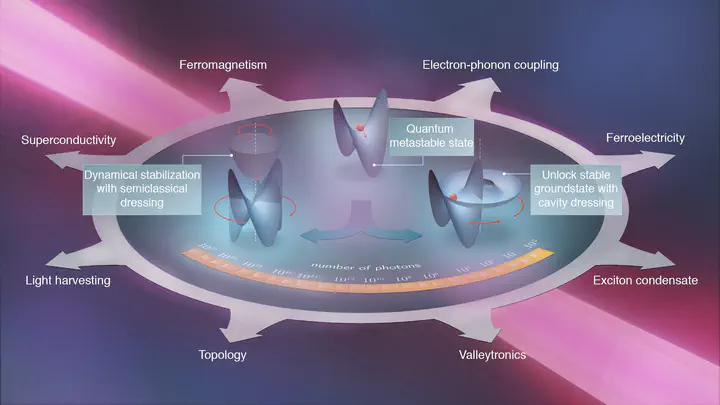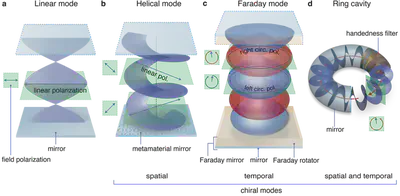Cavity and Floquet engineering
 A flavour of the landscape of possibilities offered by light-matter hybrids
A flavour of the landscape of possibilities offered by light-matter hybridsEngineering Non-Equilibrium States with Strong Lasers
The application of strong lasers to a material can induce a transition to a different, non-equilibrium state. This phenomenon can be understood through the dressing picture, where the electronic or lattice structure of the material is influenced by the photons from the lasers, creating hybrid states of light and matter.
The Floquet Picture
Floquet theory provides a powerful framework for analyzing these dressed states, especially when the driving laser has a (nearly) constant envelope. This approach reveals the (quasi-)energy levels of the dressed system, including entire band structures in materials. Floquet engineering leverages this to alter the band properties of a material through dressing. This technique has shown significant promise in the study of topological materials and can also help interpret time-resolved ARPES data.
From Floquet Theory to Cavity QED
On a deeper theoretical level, the dressing picture from Floquet theory has parallels with the dressing effects in strongly coupled optical cavities described by quantum electrodynamics (QED). In optical cavities, this dressing leads to the formation of new quasiparticles known as polaritons, which have a high photon content.

QED Materials Engineering
The analogy between Floquet- and cavity-dressing opens up exciting possibilities for QED materials engineering. This emerging field aims to control material properties through strong coupling with photons in a cavity, leading to innovative ways to engineer new material characteristics.
This captivating interplay of light and matter through cavity and Floquet engineering not only deepens our understanding of material properties but also paves the way for revolutionary advancements in material science.